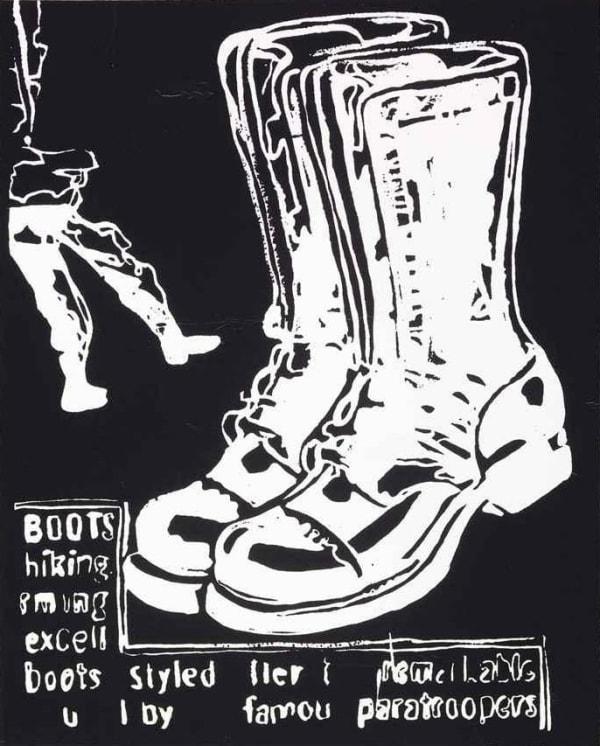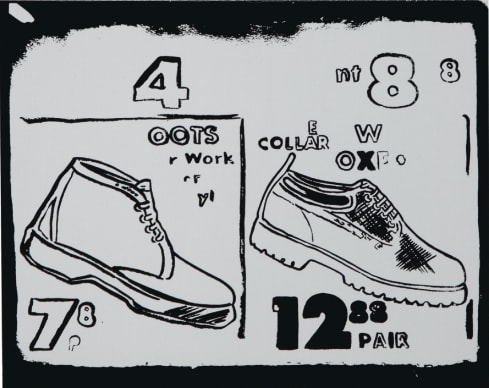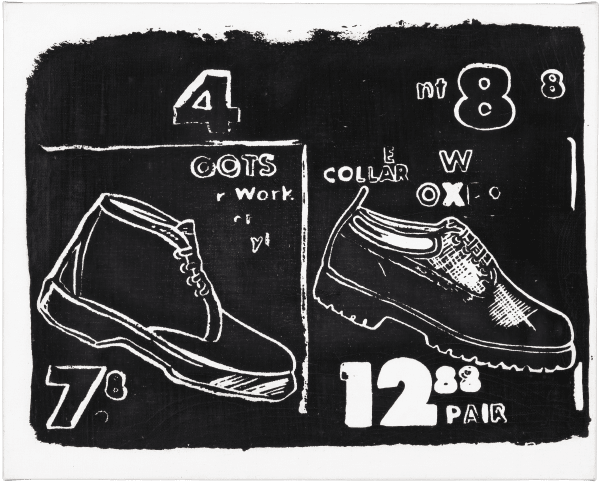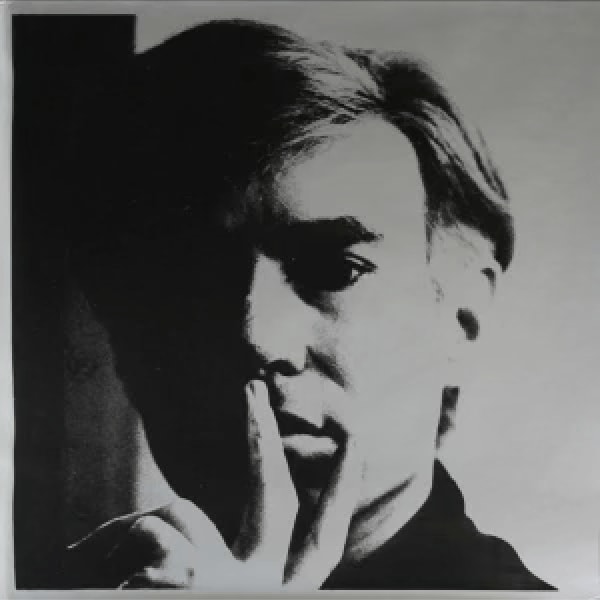Andy Warhol: Pop! In Black and White
-
Pop! In Black and White

When we think of Pop Art, vibrant color is usually front and center. Yet in this striking collection of black-and-white paintings and prints, Andy Warhol’s vision comes through with exceptional clarity. Stripped of color, these works reveal the core of his artistic concerns examined with precision and restraint. Through repetition, serialization, and keen observation, Warhol creates pieces that are both bold and contemplative, showcasing a mature artist fully in command of his practice and voice. These monochrome works are not a departure from Pop, but a distillation of its essence - elegant, incisive, and deeply reflective.
Andy Warhol's Positive/Negative artworks represent a powerful meditation on image, identity, and reproduction - core themes that run throughout his career. By rendering an image in both its positive and negative form, often side by side or in serial repetition, he invites viewers to consider how visual meaning shifts depending on context, tone, and perception.
Using his signature silkscreen technique, Warhol flattens and abstracts the subject matter, emphasizing shape, contour, and light. The result is a striking formal simplicity that belies the conceptual complexity beneath. The "positive" image offers presence, familiarity, and legibility, while the "negative" version inverts expectations, introducing ambiguity and a sense of visual absence. Together, they create a dialogue between what is seen and what is hidden, what is remembered and what is erased.
This body of work also reflects Warhol's ongoing interest in duplication and mechanical reproduction. The positive/negative pairings echo the photographic process and mass-printing techniques, drawing attention to the ways media and consumer culture reproduce and distort reality. In removing the nuance of tone and detail, Warhol forces the viewer to confront how much we rely on context to interpret an image, and how easily perception can be manipulated.
Warhol's Positive & Negative works are not just exercises in graphic design; they are deeply rooted in his commentary on culture, commodification, and the power of the image in modern life. The stark contrasts serve as metaphors for duality, making these pieces some of his most visually striking and conceptually resonant. For collectors and viewers alike, they offer a fresh lens through which to engage with Warhol's legacy: one that is as much about what we see as what we choose to overlook.
-
Works

















